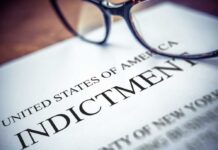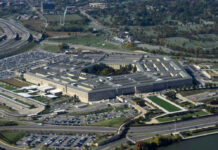
Nearly four years and millions of taxpayer dollars later, the FBI still cannot identify the suspect who planted pipe bombs near both the DNC and RNC headquarters on January 6, 2021. The FBI has released new video footage today and is seeking help.
See the video released today by the FBI’s Washington Field Office, a bit further down this post.
Story Snapshot
- The FBI has just released new, higher-quality surveillance footage of the 2021 D.C. pipe bomb suspect, but the case remains unsolved.
- Despite a $500,000 reward and extensive resources, authorities have failed to identify the perpetrator nearly four years after the attempted attack.
- The bombs, placed on the eve of January 6, 2021, were viable but did not detonate, raising serious questions about motive and security lapses.
- This continued mystery has fueled public concern about law enforcement effectiveness and the security of America’s political institutions.
FBI’s Renewed Appeal: New Footage, Old Questions
Today, the FBI released higher-quality surveillance videos showing previously unseen angles of the suspect who planted pipe bombs outside the Democratic and Republican National Committee headquarters on January 5, 2021.
The release came as part of a renewed appeal for public assistance, with the reward for information still set at $500,000.
Despite the clarity of the new footage and years of investigation, no arrests have been made, and the suspect’s identity remains unknown. This ongoing failure has left many Americans frustrated with the lack of answers and results.
The FBI is still offering a $500,000 reward for information that helps identify the person who placed pipe bombs at the offices of the Democratic National Committee and Republican National Committee on January 5, 2021. As part of our ongoing investigation, we're releasing an… pic.twitter.com/LAP36S1nIk
— FBI Washington Field (@FBIWFO) October 22, 2025
The pipe bombs were discovered on January 6, 2021, as chaos unfolded at the U.S. Capitol. Authorities were able to safely neutralize the devices, which were determined to be viable and capable of causing mass casualties had they detonated.
The timing and placement—targeting both major parties’ headquarters in a densely populated Capitol Hill neighborhood—suggest a calculated attempt to disrupt the political process and divert law enforcement resources during a critical moment in American history.
The proximity to the Capitol riot has fueled ongoing speculation about the suspect’s intent and possible coordination, yet clear answers have eluded both investigators and the public.
Investigative Hurdles and Law Enforcement Scrutiny
Since the attempted attack, the FBI, ATF, Metropolitan Police Department, and U.S. Capitol Police have conducted an exhaustive investigation. Their efforts have included reviewing cell tower data, conducting forensic analysis of the devices, and analyzing countless hours of surveillance footage.
Investigators have issued geofence warrants, identified multiple persons of interest, and pursued public tips. Yet, nearly four years later, not a single suspect has been publicly named or charged.
Congressional committees have held hearings to assess the effectiveness of the investigation, raising concerns about interagency coordination and the ability of federal law enforcement to resolve high-profile threats.
The continued lack of progress has led to broader questions about accountability within federal agencies. Despite significant technological resources and public attention, the failure to solve such a major case undermines confidence in the FBI and other institutions charged with safeguarding American lives and democratic processes.
For a public already skeptical of government overreach and bureaucratic inefficiency, this high-profile unsolved crime stands as a stark reminder of the limits of federal power and the dangers posed by inadequate follow-through.
Political and Security Fallout: Erosion of Public Trust
The unresolved pipe bomb case has triggered both short-term and long-term consequences for political and public safety.
In the immediate aftermath, security was heightened at political headquarters, and anxiety about potential follow-up attacks rippled through Washington, D.C. Over time, the inability to bring the perpetrator to justice has eroded public trust in law enforcement’s ability to respond to sophisticated threats.
Political observers note that the symbolic targeting of both parties on a critical day for American democracy raises uncomfortable questions about the vulnerabilities in our nation’s security apparatus.
FBI releases new videos of 2021 D.C. pipe bomb suspect, as case remains unsolved. https://t.co/HsuDxMJtIr
— ELLIOT IN THE MORNING (@EITMonline) October 23, 2025
Security experts have highlighted the sophistication of the devices and the suspect’s apparent awareness of surveillance blind spots, which has complicated efforts to track their movements.
Meanwhile, the incident has spurred calls for improved surveillance, better investigative tools, and more robust interagency cooperation.
For many conservatives, the prolonged mystery reinforces the need for transparency, accountability, and a return to law enforcement fundamentals—values that have too often been undermined by years of partisan distractions and misplaced priorities.
Sources:
FBI: $500,000 Reward Remains in Effect for Information About Capitol Hill Pipe Bomber
House Administration Subcommittee: January 6, 2021 Pipe Bomb Report
FBI: January 5 Pipe Bomb Investigation – New Footage of Suspect Placing Bomb at DNC
FBI: WFO Pipe Bomb October 2025 Update Video



















